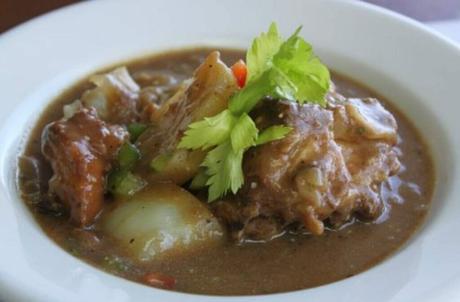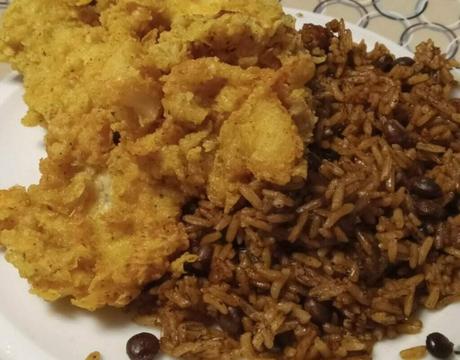Step into a world where flavors dance with the rhythm of the sea and harmony with nature is a way of life. Delve into the captivating story of the Lucayan Indians, the original inhabitants of the Bahamas, and their remarkable influence on Bahamian cuisine.
From the bountiful oceans that offered conch and grouper, to the fertile lands that nurtured cassava and wild fruits, the Lucayans’ culinary traditions thrived on a profound connection with their environment.
Discover their sustainable practices, the cultural significance of their food sources, and how their rich heritage continues to shape the vibrant flavors of modern Bahamian dishes. Join us on a mouthwatering journey through time, as we unravel the secrets of Lucayan gastronomy and celebrate their enduring legacy in the kitchens of the Bahamas.
Lucayan Food Sources

The Lucayan Indians, the original inhabitants of the Bahamas before the arrival of the Europeans, were primarily fishermen, gatherers, and farmers. Their diet relied heavily on the abundance of seafood available in the surrounding oceans, and the fertile lands on which they cultivated their crops. Conch, turtle, and fish such as grouper were staples, supplemented with wild fruits, birds, and rodents. Their farming efforts were mainly focused on cassava, a root vegetable that became a primary source of carbohydrates and served as the cornerstone of their diet.
These resources were not only limited to sustenance but also had profound cultural significance. The Lucayans incorporated these food sources into their rituals, social gatherings, and everyday life.
From using conch shells as tools to turning cassava into a ceremonial bread, they displayed an exceptional understanding of their environment, shaping their culinary practices in a way that maintained a harmonious balance with nature.
- Abundance of Seafood
- Conch: Conch was a staple in the Lucayan diet, providing a significant source of protein. It was prepared in various ways, such as conch salad, conch fritters, and conch chowder.
- Turtle: Turtles were another important source of meat for the Lucayans. They would catch turtles for their flesh, which was cooked or dried for preservation.
- Grouper and other Fish: The surrounding oceans offered a variety of fish species, including grouper, snapper, and parrotfish. The Lucayans would catch and consume these fish, either fresh or preserved through smoking or drying.
- Gathering from the Wild
- Wild Fruits: The Lucayans gathered an assortment of wild fruits, including guava, tamarind, and hog plum, which added flavor and nutrition to their diet.
- Birds: They hunted birds such as pigeon, dove, and parrot, incorporating them into their meals.
- Rodents: The Lucayans also hunted small animals like hutias, a type of rodent, which provided an additional source of protein.
- Farming Efforts
- Cassava: Cassava was a primary agricultural crop for the Lucayans. They cultivated this root vegetable, which served as a vital source of carbohydrates in their diet. Cassava was processed to make bread, flatcakes, and porridge, among other dishes.
The significance of these food sources extended beyond mere sustenance for the Lucayans. They integrated them into their rituals, social gatherings, and daily life, demonstrating a deep understanding of their environment and a harmonious relationship with nature. Some examples include:
- Conch Shells: Apart from consuming conch meat, the Lucayans used conch shells as tools and musical instruments.
- Cassava Bread: Cassava played a significant role in their ceremonies, and they transformed it into a ceremonial bread, reflecting its importance in their culture.
- Seafood feasts: The Lucayans would gather for communal feasts centered around seafood, fostering social connections and celebrating their connection with the sea.
- Sustainable practices: The Lucayans’ culinary practices emphasized sustainability and balance with nature, ensuring the preservation of food sources for future generations.
The Lucayan Indians’ food sources were diverse, abundant, and deeply rooted in their culture and environment. Through their reliance on the sea, land, and their understanding of sustainable practices, they created a culinary tradition that sustained them for centuries.
Popular Lucayan Dishes

The Lucayans had a variety of dishes they prepared from these resources. The most iconic among these was probably the cassava bread. They made this by grinding cassava into flour, which they then used to make a flat, unleavened bread. It was a staple that accompanied most meals, providing essential nutrition and energy. Another popular dish was their stews, often cooked in clay pots over open fires. They incorporated whatever seafood was available, and complemented it with harvested root vegetables and wild herbs, creating hearty and flavorsome meals.
In addition to these, the Lucayans were also proficient in the preservation of food. They developed techniques to smoke and dry fish and meats, ensuring a steady food supply even in times when fresh catches or hunts were not readily available. These preserved foods often served as ingredients in other dishes, adding layers of depth to the already rich Lucayan cuisine.
Influence on Bahamian Cuisine

The Lucayan culinary traditions didn’t vanish with the decline of their civilization; instead, they have permeated into the contemporary Bahamian cuisine. Today, you can see the echoes of Lucayan culinary practices in the widespread consumption of seafood, particularly conch. Dishes such as conch salad and conch fritters are a testament to the enduring influence of the Lucayans. Cassava also continues to be an essential ingredient in Bahamian kitchens, used in a multitude of dishes, including the popular Bahamian dish, cassava bread.
The Lucayans’ affinity for stews has been passed down generations and remains a popular cooking method in Bahamian cuisine. The Bahamian stew fish, a popular dish made from fish fillets, tomatoes, onions, and a variety of herbs and spices, bears a striking resemblance to the stews prepared by the Lucayans centuries ago.
Modern Lucayan-inspired Recipes

The influence of the Lucayans isn’t confined to traditional Bahamian cuisine; it’s also found its way into modern recipes, offering a fusion of old and new. Modern Bahamian chefs draw inspiration from the Lucayans, incorporating their ingredients and techniques into innovative recipes. A modern take on the traditional cassava bread might include the addition of Bahamian spices, giving it an extra kick.
Similarly, contemporary renditions of Lucayan seafood dishes often involve the addition of international flavors while staying true to the original ingredients. Think conch marinated in citrus juices and tossed with fresh vegetables, or grouper fillets smoked to perfection and served with a side of grilled vegetables.
These recipes, while boasting a modern flair, continue to celebrate the Lucayan culinary influence, taking Bahamian cuisine to new, exciting directions.
- Spiced Cassava Bread
- Take the traditional cassava bread recipe and add a modern twist by incorporating Bahamian spices such as allspice, paprika, or chili powder.
- The result is a flavorful and aromatic bread that pays homage to the staple food of the Lucayans while infusing it with exciting new tastes.
- Citrus-Marinated Conch Salad
- Start with fresh conch meat, traditionally used by the Lucayans, and marinate it in a zesty citrus blend, which adds brightness and enhances the natural flavors.
- Toss the marinated conch with fresh vegetables like tomatoes, onions, bell peppers, and cilantro, creating a vibrant and refreshing salad that showcases the best of Bahamian ingredients.
- Smoked Grouper with Grilled Vegetables
- Build upon the Lucayan tradition of using grouper as a primary fish source.
- Smoke the grouper fillets to perfection, infusing them with a smoky aroma.
- Serve the smoked grouper alongside a medley of grilled vegetables like zucchini, bell peppers, and eggplant, creating a delightful contrast of flavors and textures.
- Cassava Fritters with Dipping Sauce
- Combine the versatility of cassava with a modern take on fritters.
- Grate cassava and mix it with traditional ingredients like onions, garlic, and spices.
- Form the mixture into fritters and fry until golden brown.
- Serve the cassava fritters with a tangy dipping sauce, incorporating local flavors like lime, hot peppers, and herbs.
- Coconut and Guava Tart:
- Utilize two ingredients favored by the Lucayans – coconut and guava – in a delectable dessert.
- Create a coconut-infused tart shell and fill it with a luscious guava filling.
- Garnish with shredded coconut or fresh guava slices for an enticing tropical twist.
These modern Lucayan-inspired recipes demonstrate how Bahamian chefs infuse traditional ingredients and flavors with contemporary culinary techniques. By celebrating the heritage of the Lucayans, these innovative recipes elevate Bahamian cuisine, offering a delightful fusion of old and new.
Lucayan Culinary Influence on The Bahamas FAQ

What food is the Bahamas famous for?
The Bahamas is famous for its seafood, particularly conch. Conch is a staple in Bahamian cuisine and is used in various dishes such as conch salad, conch fritters, and conch chowder. Other popular Bahamian dishes include cracked conch, fried fish, and traditional dishes like peas and rice and johnnycake.
What influences Bahamian culture?
Bahamian culture is influenced by a blend of African, European, and indigenous Lucayan traditions. The African influence is evident in music, dance, and storytelling, while European influences can be seen in architecture and colonial traditions. The Lucayan heritage is celebrated through arts and crafts, as well as culinary practices.
Where did Bahamian food come from?
Bahamian food is a fusion of various culinary traditions brought by the different groups that have inhabited the Bahamas. The cuisine reflects influences from West Africa, England, Spain, and the Americas. Additionally, the indigenous Lucayans contributed to the food culture with their reliance on seafood and farming practices, particularly cassava cultivation. The resulting blend of these influences has shaped the unique flavors and dishes of Bahamian cuisine.

